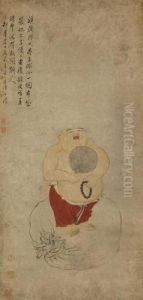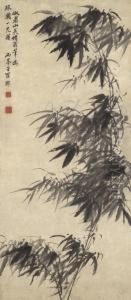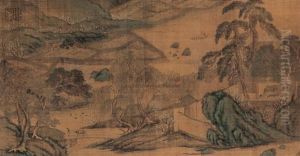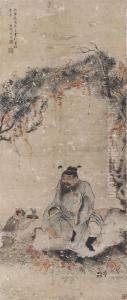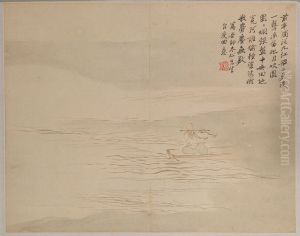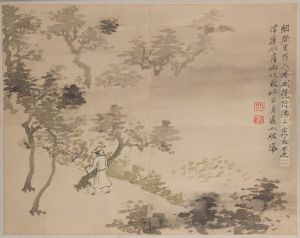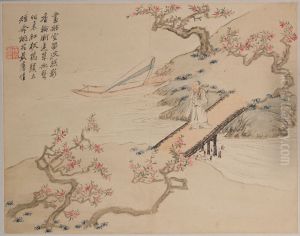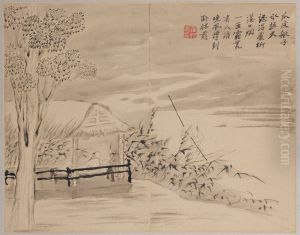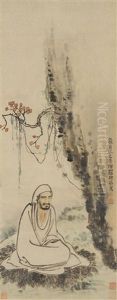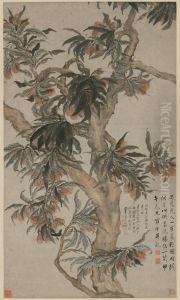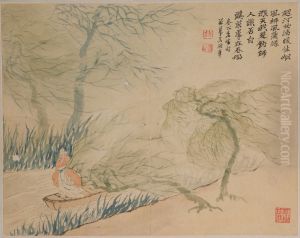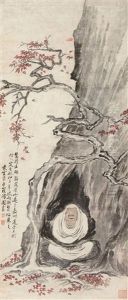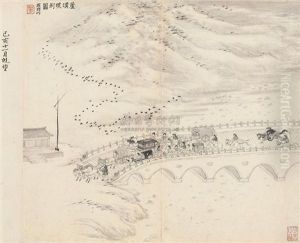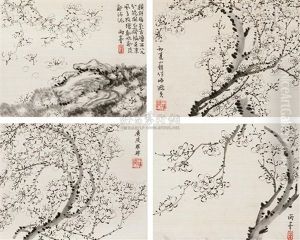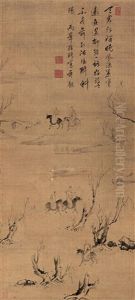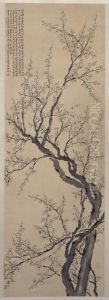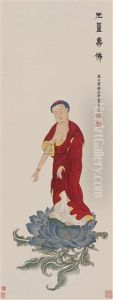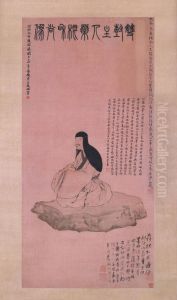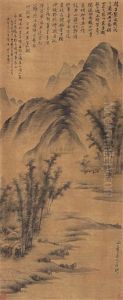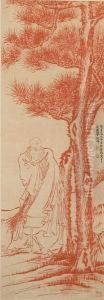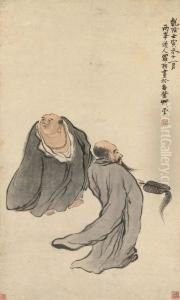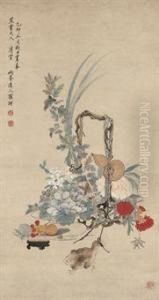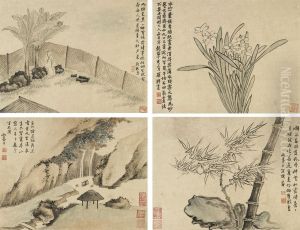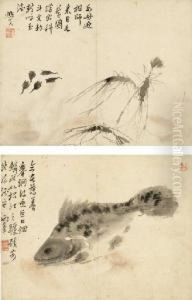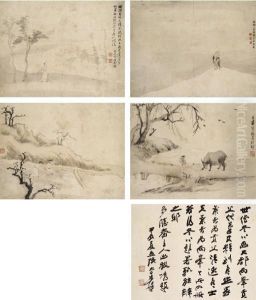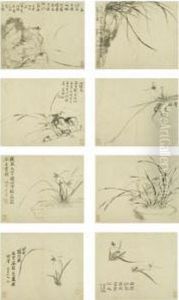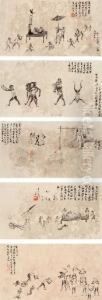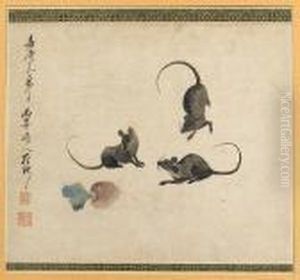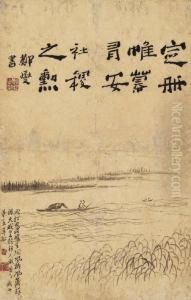Luo Ping Paintings
Luo Ping, also known as Luo Bing, was a prominent Chinese painter during the Qing Dynasty. Born in 1733 in Jiangsu province, Luo was a versatile artist known for his accomplishments in figure painting, landscapes, and particularly for his ghost paintings. He was a member of the Eight Eccentrics of Yangzhou, a group of artists who were celebrated for their unconventional techniques and innovative styles that diverged from the orthodox approaches promoted by the Qing court and its academies.
Luo Ping's early life was marked by his close association with Jin Nong, another member of the Eight Eccentrics, who had a profound influence on Luo's artistic development. Under Jin Nong's guidance, Luo honed his skills in painting and calligraphy, quickly establishing himself as a formidable talent in the Yangzhou art scene. His works are characterized by their expressive brushwork, imaginative compositions, and often, a whimsical or eerie quality, especially evident in his ghost paintings which are among his most acclaimed works.
In 1763, Luo married the poet Huang Shen, and this partnership fostered a creative environment that further enriched Luo's artistic output. His paintings not only showcase his technical prowess but also reflect the cultural and intellectual exchanges among artists and literati of his time. Luo's ability to infuse traditional Chinese painting with personal expression and emotional depth made him a pivotal figure in the evolution of Chinese art.
Throughout his career, Luo Ping remained an influential and innovative artist, whose works challenged conventional norms and explored new artistic territories. His legacy is not only preserved in his diverse body of work but also in his impact on subsequent generations of Chinese artists. Luo Ping's death in 1799 marked the end of an era, but his contributions to Chinese art continue to be celebrated for their originality and enduring beauty.
